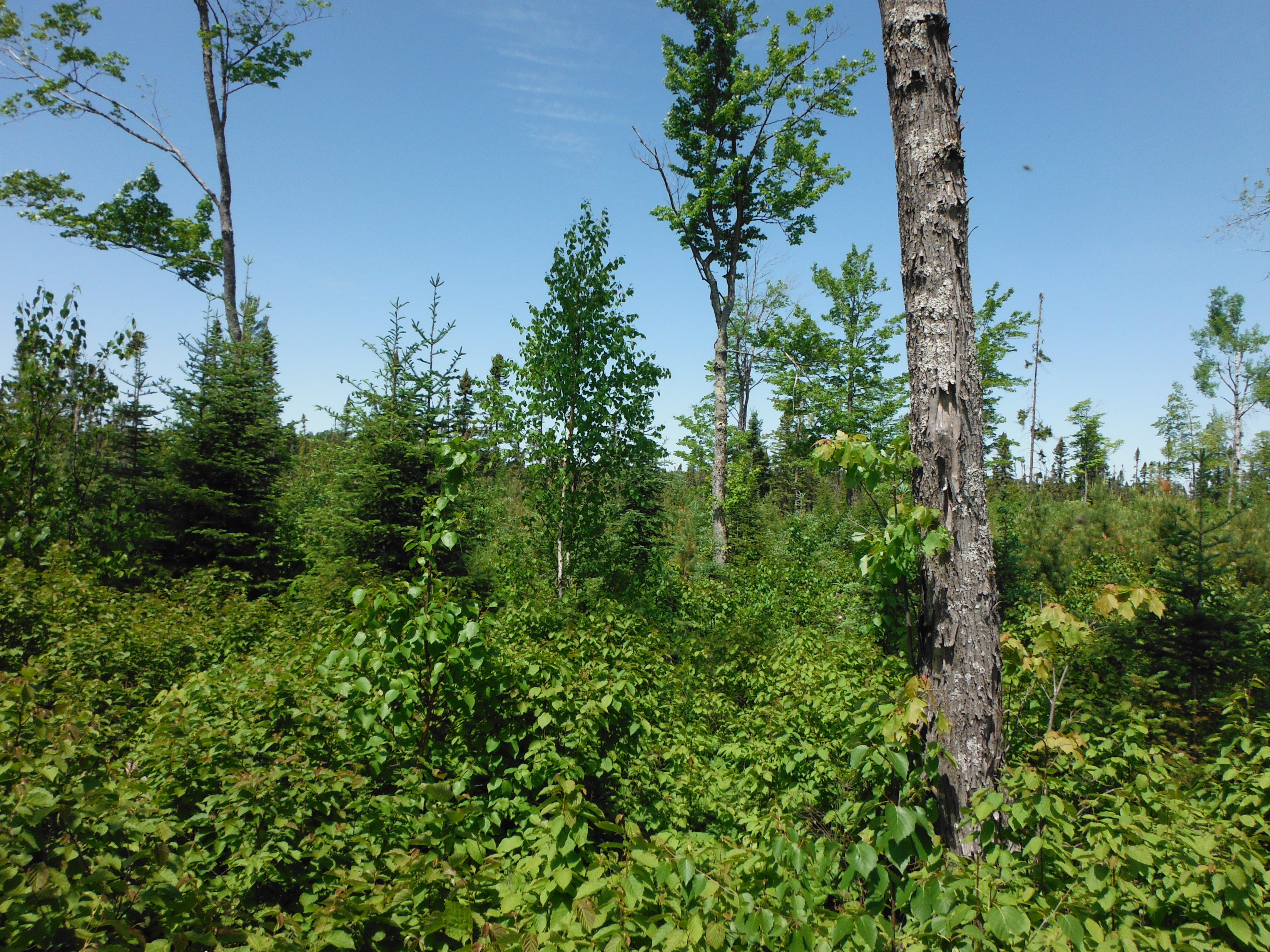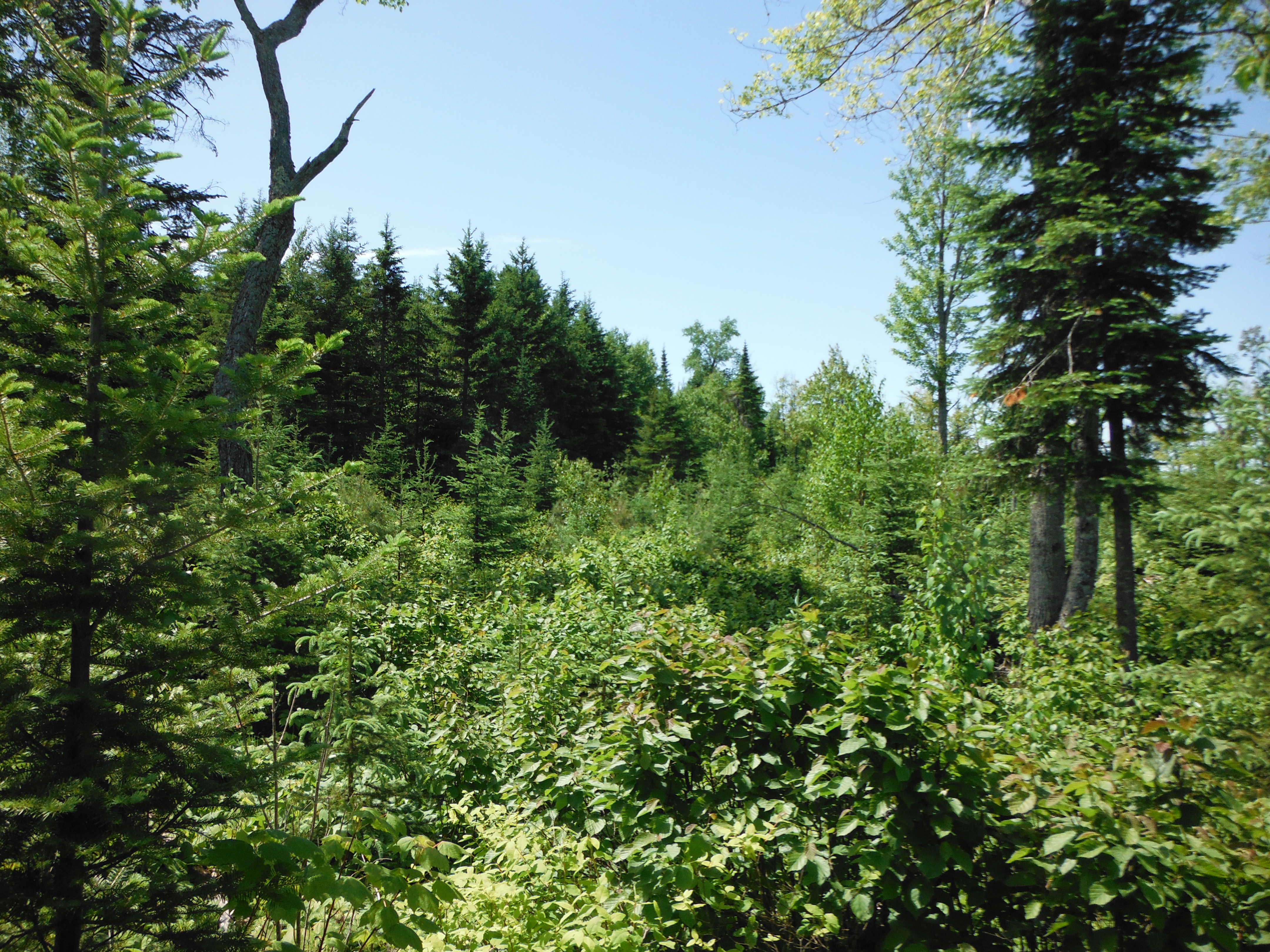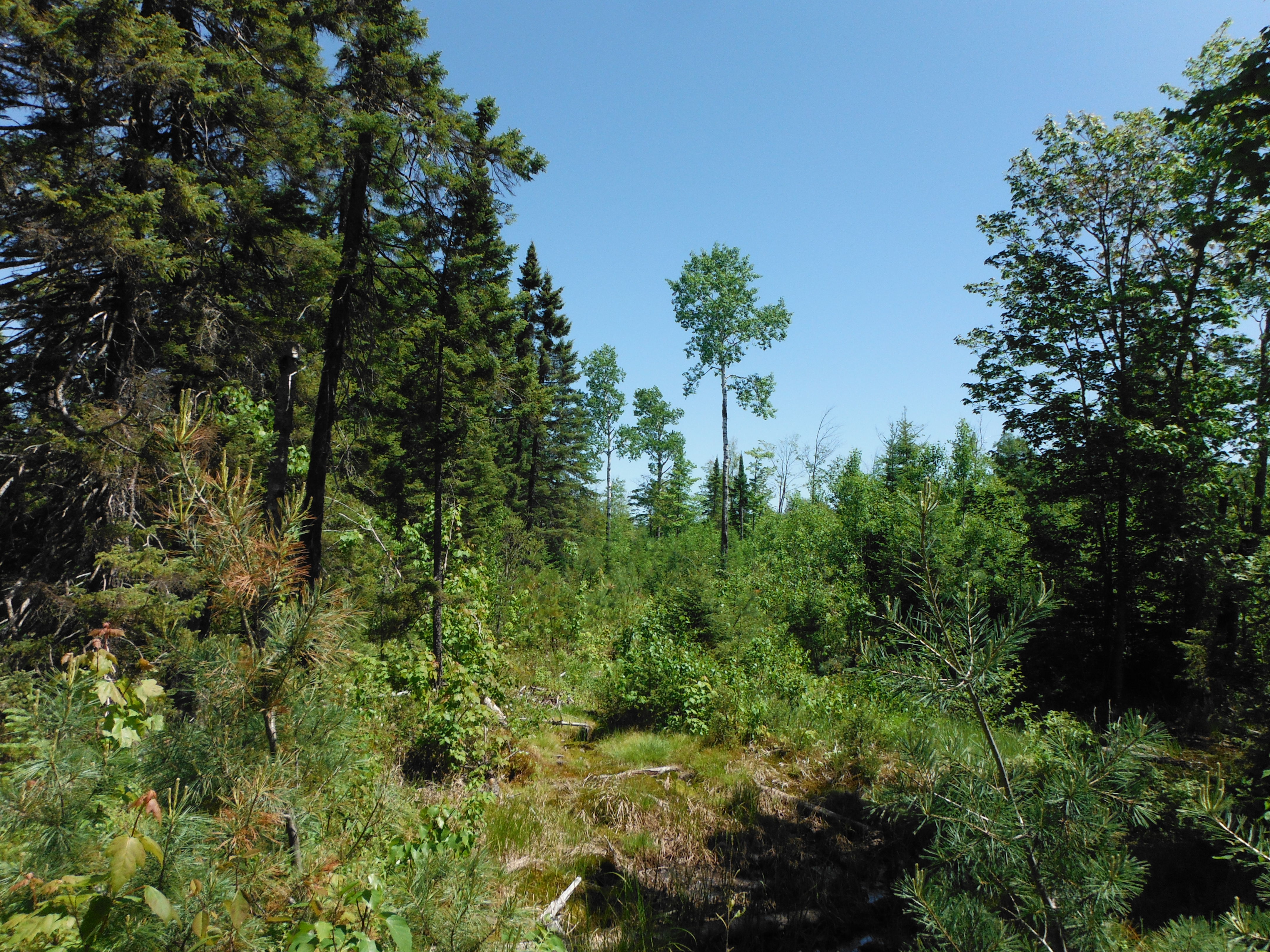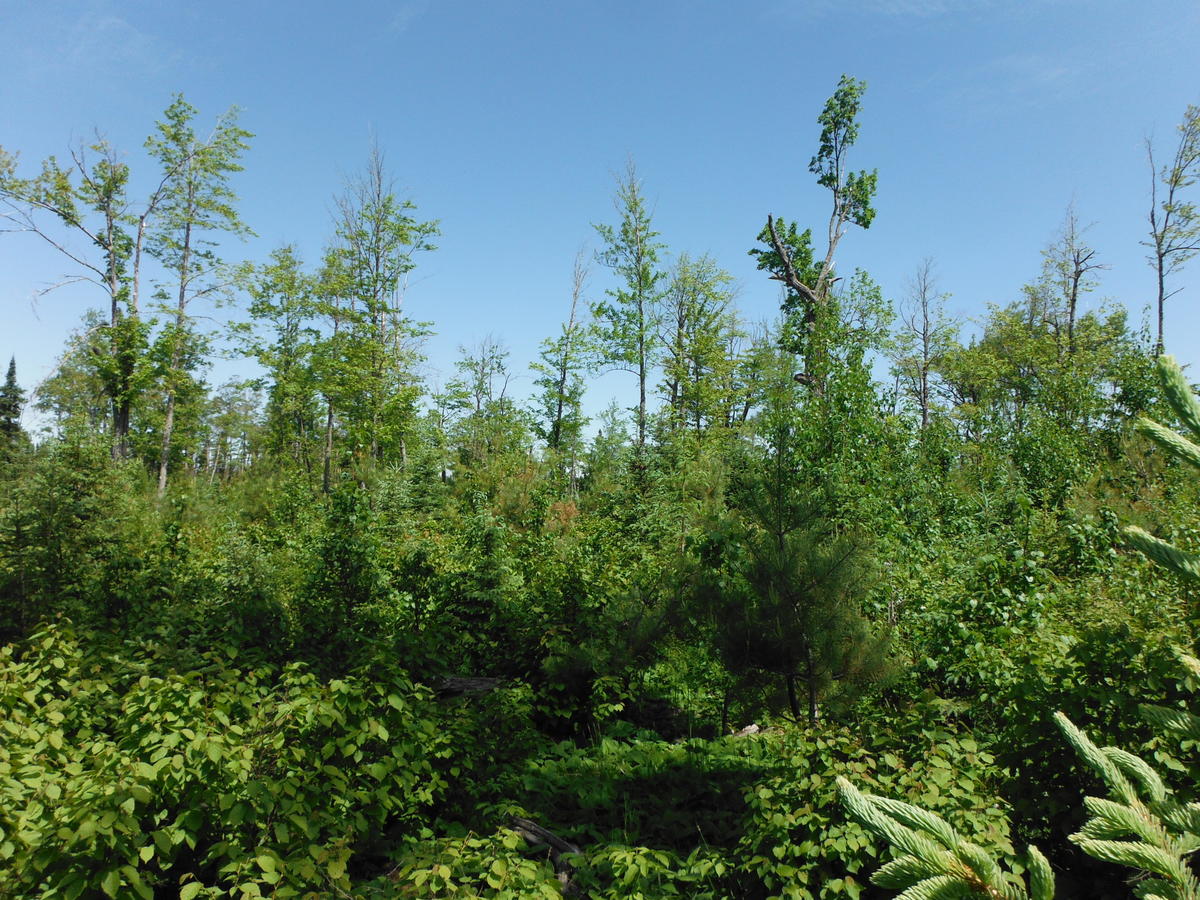Overview
The Superior National Forest’s silviculture prescriptions are part of the National Environmental Policy Act (NEPA). The NEPA process includes proposal development, environmental analysis, and implementation of proposed activities. After the NEPA decision notice is finalized, the silviculture activities can begin in a given project area.
These NEPA prescriptions usually start with stands in mature forest condition. The regeneration harvest method is designated, followed by how the stand will be regenerated. Tending and intermediate treatments are completed based on need and whether funds are available to complete these types of activities. Five years after a timber harvest, stands are usually certified as reforested. Once stands have been certified, they may not be revisited for many years. However, the Superior National Forest would like to inventory reforested stands at 10-20 years after reforestation to determine if prescription objectives are being met.
There are several items that I would like to discuss. First, what was the desired future condition and the prescription for these stands? Management in the past was often more concerned with generating revenue from standing timber rather than desired future conditions. Consequently, the desired future condition and silviculture prescription can be hard to determine. For that reason, in this study I have recreated the desired future condition and silviculture prescription based on pretreatment stand conditions, management history, and current stand conditions. The second item is, does the prescription fit the site from an ecological stand point? Why or why not and how so? Third and finally, what would I do differently, and why?
Silviculture Objective(s)
Desired Future Stand Conditions:
• Even-aged aspen, white spruce, balsam fir, and white pine stand.
• Aspen, white spruce, white pine, and balsam fir are the dominant species present, accounting for at least 1500 trees per acre and 50% of species composition.
• Paper birch is regenerating in the stand and contributes to tree species diversity.
• The trees in the stand are growing at an optimum rate and are resilient to insect and disease attacks.
Pre-treatment stand description and condition
Stand establishment and management history:
Original Prescription:
Harvest Method – Salvage Clearcut, Site prep burn, Aerial seed black spruce/paper birch.
2004: Salvage clearcut, Bluemoon Sale, PU 10.
2006: Mechanical Site Prep for Planting.
2006: Planted, 5.8M WP and 5M WS, 635 tpa white spruce and white pine, container
2007: tree release and weed
2008: 1st year stocking survey, 82% stocked, 98% survival of white pine
2010: 3rd year stocking survey; certified with 3882 trees per acre (50% aspen, 20% paper birch, 10% red maple, <10% balsam fir, white spruce, white pine).
Pre-treatment growth and stocking:
1982: Paper Birch and Sugar Maple, 40-70 ft2/acre BA. 12” dbh.
Pre-treatment forest health issues:
Moose beds, scat, and browse. Heavy browse on paper birch and aspen. Brush browsed. Stand borders a black spruce sphagnum lowland to the northwest. White pine leaf adelgid present in stand. Some white pine blister rust observed.
Landowner objectives/situation:
Short-term objectives:
• Harvest paper birch before timber value is lost.
• Establish a mixed forest stand. Enhance tree species diversity by allowing hardwood and conifer species to regenerate in the stand.
• Provide sustainable timber products to local operators.
Long-term objectives:
• Fully stocked, mature, healthy mixed wood stand.
• Maintain or enhance species diversity.
• Maintain a strong conifer component in the stand. Recruit potential snags and downed wood into the stand.
Silviculture Prescription
Regeneration Harvest –
Primary treatment
Clearcut with reserves. Reserve 5% of stand area as a legacy of clumps of trees. Reserve clumps shall, wherever possible, be at least 2 acres in size with a basal area of 80 ft2/acre or more and a dbh of 6” or more. Reserve single trees shall be scattered throughout the stand and retained at a density of approximately 6 to 12 trees per acre. Reserve trees shall be windfirm and selected in order of preference as: sugar maple then aspen.
Secondary treatment
Mechanically prepare the site for planting via tractor scarification. Scarify the ground to expose mineral soil and remove competing vegetation. Equipment shall work the soil to a depth of 3-4” on average.
Regeneration
Plant pine at a density of 335 tpa. Plant white spruce at a density of 300 tpa. Natural regeneration of paper birch, quaking aspen, white spruce, balsam fir, sugar maple and red maple.
Intermediate Treatments
Release white pine and white spruce from deciduous competition so that conifers maintain a growth advantage over deciduous growth, especially brush. Release best formed pine and spruce (those with no damage or disease, upright, straight, single stems) that are spaced approximately 8’ x 8’, but prioritize healthy trees over exact spacing. Use brush saws to clear all vegetation within a 2 foot radius of healthy pine and spruce regeneration. Prune lower branches of white pine to help prevent white pine blister rust infection of regenerating trees, if needed or as funding allows.
Post-treatment assessment
Forest Type: Aspen-white spruce/balsam fir (with white pine component). DBH: 2", Height: 12 feet; Density: 3,225 TPA
Quaking aspen, moderate density, clumpy distribution, 2” dbh, 14 ft. tall, 30% of composition
White spruce, moderate density, even distribution, 2” dbh, 10 ft. tall, 20% of composition
Balsam fir, moderate density, clumpy distribution, 2” dbh, 10 ft. tall, 20% of composition
White pine, moderate density, clumpy distribution, 2” dbh, 10 ft. tall, 20% of composition
Paper Birch, low density, even distribution, 2” dbh, 14 ft. tall, 10% of composition
Brush – high density (13,785 stems/acre), even distribution, but tree regeneration is above brush height, 3 ft. tall

Figure 1: Young birch, sugar maple, balsam fir, and white pine amongst residual sugar maple. Black spruce lowland in the background.

Figure 2: Young balsam fir, birch, aspen, and brush below residual sugar maple.

Figure 3: Border of stand. Black spruce lowland to the northwest. White pine and sugar maple in the foreground. Sugar maple and aspen overstory residuals in the background above balsam fir, aspen, and white pine.
Ecologically, the management activities that occurred (vs. what was listed in the prescription – clearcut, burn, aerial seed to black spruce and paper birch) could fit this site in some ways, but mostly does not align with natural succession. Clearcutting followed by mechanical site preparation mimics a catastrophic disturbance, which is very rare in MHn45. MHn45 would almost always be uneven-aged, but the management activities on this site created an even-aged stand. Young forests recovering from catastrophic events would be composed primarily of sugar maple. White spruce is listed as a component of this forest type that would dominate in very old stands (195+ years). White pine is not listed in the NPC description for this site, but may have historically been a component prior to European settlement and the white pine logging era. Clearcutting followed by site prep and planting can change a site so much so that the NPC type can be difficult to determine. The clearcut harvest and mechanical site preparation eliminated much of the sugar maple that should have been a large component of this site. If some of the overstory sugar maple had not been retained as legacy trees, I may have mistakenly typed this site out as FDn43.
The original prescription was for clearcutting to be followed by site prep burning and aerial seeding of black spruce and paper birch. The site was bordered by a black spruce/sphagnum moss lowland. Inaccuracies in our stand attribute records are an ongoing problem. Prescriptions will be written based on old or incorrect data. Perhaps this is the case for this site. The activities that did take place fit the site better than the original prescription, but poorly represent natural ecological disturbance in mesic hardwood forests.
According to the Silviculture Interpretation for MHn45, aspen and white pine are only considered fair choices for crop trees, while white spruce is ranked as good, and paper birch is ranked as excellent. Even though sugar maple is also ranked as excellent, the timber value of sugar maple on the North Shore is poor; it is usually sold as firewood, rather than for lumber or veneer.
Plans for future treatments
For the original prescription I would probably choose something different, but it is difficult to determine what that would be without knowing too much about the pre-harvest site conditions. One possibility would be to harvest the birch and allow the stand to regenerate naturally. This probably would have resulted in the stand transitioning to a Sugar Maple forest (MHn45c) and is what naturally would occur over time. Tree species diversity would decrease with this option and forest plan objectives for mesic hardwoods are for this forest type to decrease. Underplanting white spruce after the harvest at a rate of 200 tpa could increase species diversity. Perhaps there would be more natural regeneration of paper birch if site preparation had been omitted and the birch was allowed to stump sprout.
Regeneration Harvest –
Primary Treatment
Salvage cut to remove declining paper birch.
Secondary Treatment
none
Regeneration
Underplant 200 tpa white spruce. Natural regeneration of paper birch and sugar maple.
Intermediate Treatments
Release of birch and spruce.
Currently, the stand should be left to grow until the aspen, spruce, and fir reach maturity. The stand should be monitored every 10-20 years to ensure stand and tree health is maintained.
Other notes
This case study was developed with support from the United States Department of Agriculture's National Institute for Food and Agriculture (USDA-NIFA), Renewable Resources Extension Act (RREA). Project #MIN-44-E02, principal investigator Eli Sagor, University of Minnesota.
Summary / lessons learned / additional thoughts
The purpose of the Sawbill Monitoring project was to review the previous prescription for a stand and answer three questions. The first question addressed the desired future condition and the prescription, following which I recreated the desired future condition and silviculture prescription based on pretreatment stand conditions, management history, and current stand conditions. The second question to answer was, does the prescription fit the site from an ecological stand point? Why or why not and how so? Third and finally, what would I do differently, and why? These three case studies also addressed a need to revisit stands at a more regular interval to determine if action needs to be taken. If a stand is certified regenerated and then not visited for decades the window for intermediate treatments may pass forest managers by and result in degraded quality when it comes time to harvest. Rather, revisiting a stand 10-20 years after its regeneration certification allows foresters to determine if prescription objectives are being met.
For this particular stand the prescription created an even-aged stand which did not quite fit the mesic hardwood community type. Inaccurate stand data may have contributed to the previous prescription. However, the current plan for this mixed-woods stand is to let the crop trees grow to maturity and continue to monitor for forest health threats.
